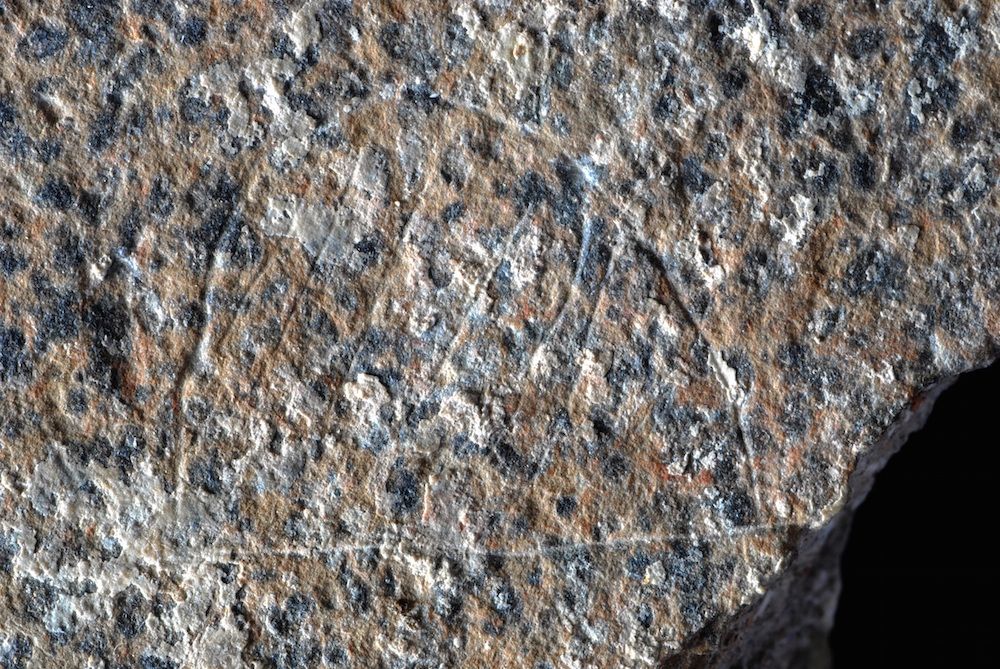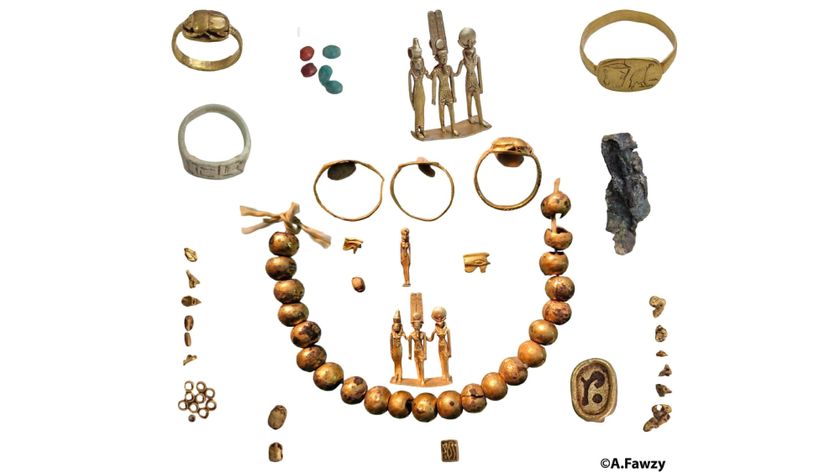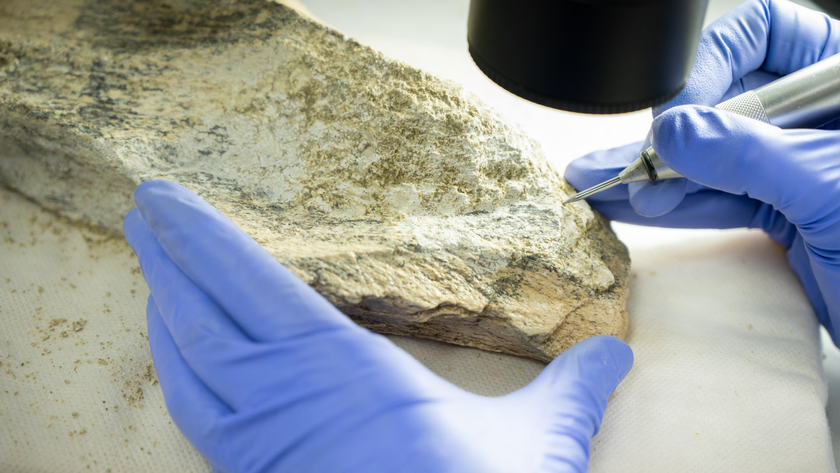
The world's oldest depiction of a campsite may have been unearthed outside a cave in Spain.
Newfound etchings, discovered near the Molí del Salt rock shelter in northeastern Spain, show primitive huts drawn by hunter-gatherers about 13,800 years ago. The findings suggest that the ancient people may have lived in dwellings similar to those of modern-day hunter-gatherers, and could shed light on the lifestyle of these elusive people. [See Images of Amazing Art Found in El Castillo Cave in Spain]
Ancient campsite
From about 15,000 to 9,000 years ago, ancient nomadic people kept returning to the Molí del Salt rock shelter.
"This site was fully incorporated in the annual cycle of these nomadic societies. During this time, the Paleolithic human groups produced instruments for hunting and for work on the skin, dismembered animals to consume meat, cooked food and possibly they slept in that space," said study co-author Manuel Vaquero, an art historian at the Catalan Institute of Human Paleoecology and Social Evolution in Tarragona, Spain.
Ample evidence points to human occupation of the site. But scientists haven't known exactly what those Paleo villages looked like, because drawings or other representations of human dwellings have not been found from this time. However, postholes from ancient settlements around Europe suggest hunter-gatherers used huts made with wood for framing and with an oval floorplan. And debris from a 19,400-year-old human settlement in what is now Israel, called Ohalo II, suggests the walls were made of plant material.
The new drawings provide the missing piece to the puzzle over how these people lived.
Sign up for the Live Science daily newsletter now
Get the world’s most fascinating discoveries delivered straight to your inbox.
Enigmatic etchings
Vaquero and his colleagues first uncovered the etchings in 2013, while excavating at Molí del Salt. The slab showed a row of seven semicircular shapes, with parallel lines within each.
The ancient etchings wouldn't win any art awards: To the naked (and novice) eye, the etchings look like a 4-year-old's crude line drawing of a tent. But the team decided to take a closer look under a microscope, where they analyzed the depth and shape of the lines. The etchings were made by the same technique in a short period of time, the researchers reported today (Dec. 2) in the journal PLOS ONE.
The team also analyzed the dimensions of the etched domes and found they matched those commonly found in domes or semicircular huts used by modern hunter-gatherer societies, such as the wigwams historically used by many Native American tribes.
Assuming people lived four or five to a hut, as modern people do, each hunter-gatherer enclave would have included at least 28 to 35 people, said study co-author Marcos García Diez, an archaeologist at the University of the Basque Country in Vitoria, Spain.
The art's subject matter is also unusual for its time, Diez said.
"We think that the Molí del Salt engraving supports the hypothesis that there was a secular art in the Paleolithic, devoid of spiritual or religious meaning. Due to its singularity, we think that it was the expression of the individual feeling of someone who departed from the conventions that ruled Paleolithic art," Diez told Live Science.
Follow Tia Ghose on Twitter and Google+. Follow Live Science @livescience, Facebook & Google+. Original article on Live Science.

Tia is the managing editor and was previously a senior writer for Live Science. Her work has appeared in Scientific American, Wired.com and other outlets. She holds a master's degree in bioengineering from the University of Washington, a graduate certificate in science writing from UC Santa Cruz and a bachelor's degree in mechanical engineering from the University of Texas at Austin. Tia was part of a team at the Milwaukee Journal Sentinel that published the Empty Cradles series on preterm births, which won multiple awards, including the 2012 Casey Medal for Meritorious Journalism.









